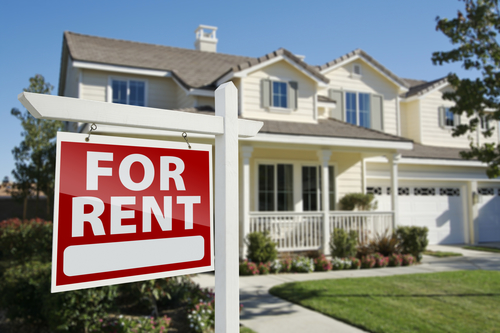With the sound of torrential rain beating on the roof and buckets of water pouring into their homes, Residents of an Atlanta apartment complex evacuated their apartments just minutes before the roof collapsed into the building. At least a dozen families were left with no home, ruined possessions, and nowhere to go. The good news is nobody was harmed when the roof collapsed.
Now the questions started, why did this happen and what if someone had been injured? Between the landlord, rental agency, and renter who would be responsible for any personal injuries? These questions are not easily answered.
Prior to the storm and collapse, an independent subcontractor started repairing the roof, taking tiles off and leaving holes. Unknown to all, the subcontractor doing the work did not take out the proper permits. The subcontractor placed a tarp over the roof to protect it from the storm. However, the wind striped the tarp away leaving the roof to the mercy of the elements. Do these facts absolve the landlord from liability to their tenants?
Answering the question of whether the landlord is liable to the tenants requires a detailed analysis of facts. Each case is unique and different.
Proving Landlord and Owner Negligence
Under the basic principles of premises liability, landlords and owners owe a duty to maintain a safe place for their tenants to live. Under Georgia law, the landlord and property owner must take reasonable steps to ensure the property is safe from dangerous conditions.
In order to collect for damages due to a personal injury, tenants must prove the following elements: The property contained a dangerous condition. Landlords and owners are legally obligated to take certain precautions to prevent injury to others. However, this does not mean landlords and owners are automatically liable any time an individual gets hurt on their premises. Examples of dangerous conditions leading to legal liability may entail:
- Collapsed decks, balconies and staircases;
- Inadequate maintenance;
- Inadequate security;
- Accidents caused by uneven terrain, unnoticeable steps, or slippery surfaces;
- Defective construction or structural defects;
- Inadequate lighting;
- Exposure to hazardous chemicals or toxic materials, including mold and lead paint;
- Crumbling or unstable surfaces;
- Falling objects or structures;
- Hidden or obscured hazards; or
- Dog bites;
- The landlord or owner who knew or should have known, through the exercise of ordinary care, about the dangerous condition. As a plaintiff, you must be able to show that landlord or owner knew or should have known about the dangerous condition, had time to fix the problem or warn, but did not. However, the law expects both plaintiffs and defendants to exercise reasonable care for your own safety. Thus, a plaintiff who is running or letting himself get distracted may not be able to recover (or his or her recovery will be limited) if his or her own conduct contributed substantially to the injury. Conversely, landlords and owners may be absolved from liability if they did not have any opportunity to address a potential hazard.
- The landlord or owner failed to remove it or warn of its existence. A landlord or owner who fails to take reasonable steps to remove or warn of a dangerous condition is generally liable for injuries caused by the dangerous condition. These steps may include cleaning up dangerous materials or objects; installing fencing around a sinkhole; putting up warning signs; or taking other reasonable steps to reduce or eliminate the dangerous condition.
- The dangerous condition caused an injury. Injured tenants can collect their medical expenses, lost wages while off work due to the injuries, pain and suffering and other damages suffered.
Negligence Per Se
If landlords or owners fail to follow a law or ordinance applicable to maintaining the premises, and a tenant is injured as a direct result of that violation, the landlord or owners may be held liable without the tenant needing to jump through the hoops of proving negligence. For example, if an ordinance requires lights in a hallway, and a tenant is injured because the bulbs are burned out and the tenant can’t see an obstacle in the hall, trips, falls and is injured, all the proof that is needed is that the landlord or owner admits he or she violated a law or ordinance – usually through a guilty plea in court or admission in litigation.
Consult with an Experienced Attorney
Proving your landlord is responsible for your injuries is not an easy task. You need the assistance of the experienced attorneys at Georgia Trial Attorneys at Kirchen & Grant, LLC. Our consistent track record of success is one of many reasons why client come to us for their premise liability cases. Contact one of our attorneys online or by calling 678-392-1401 to schedule your free case evaluation.

